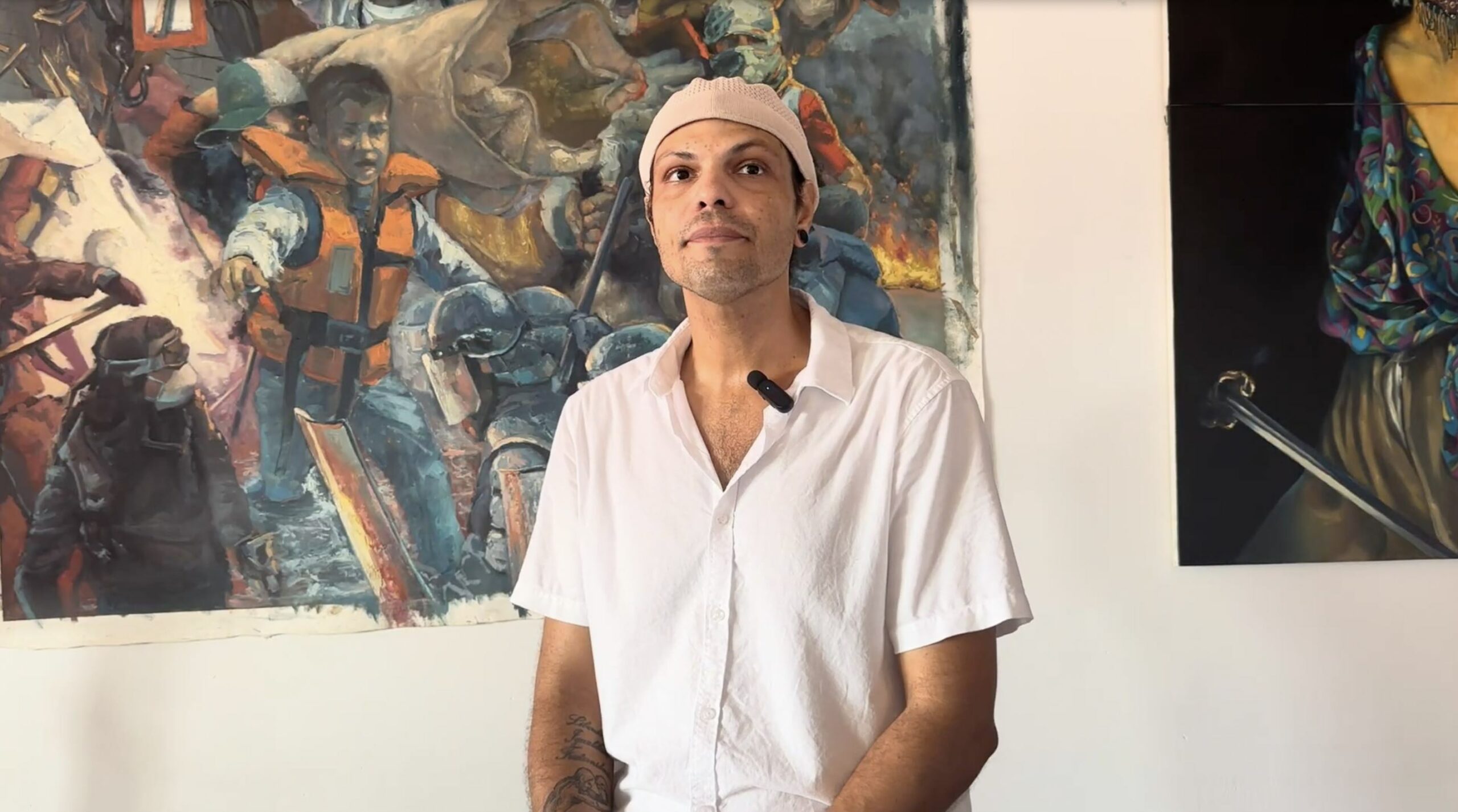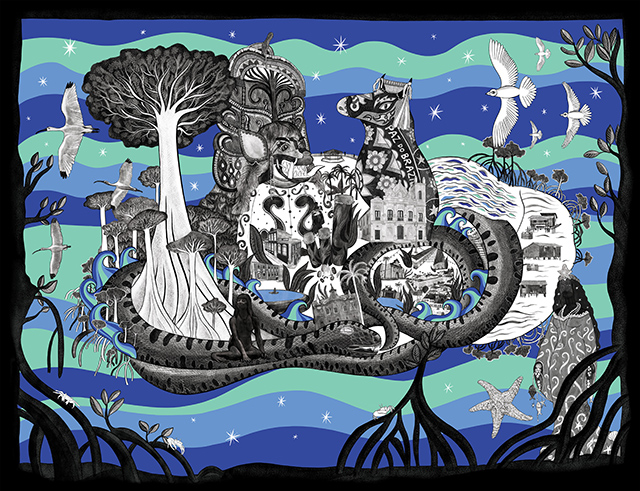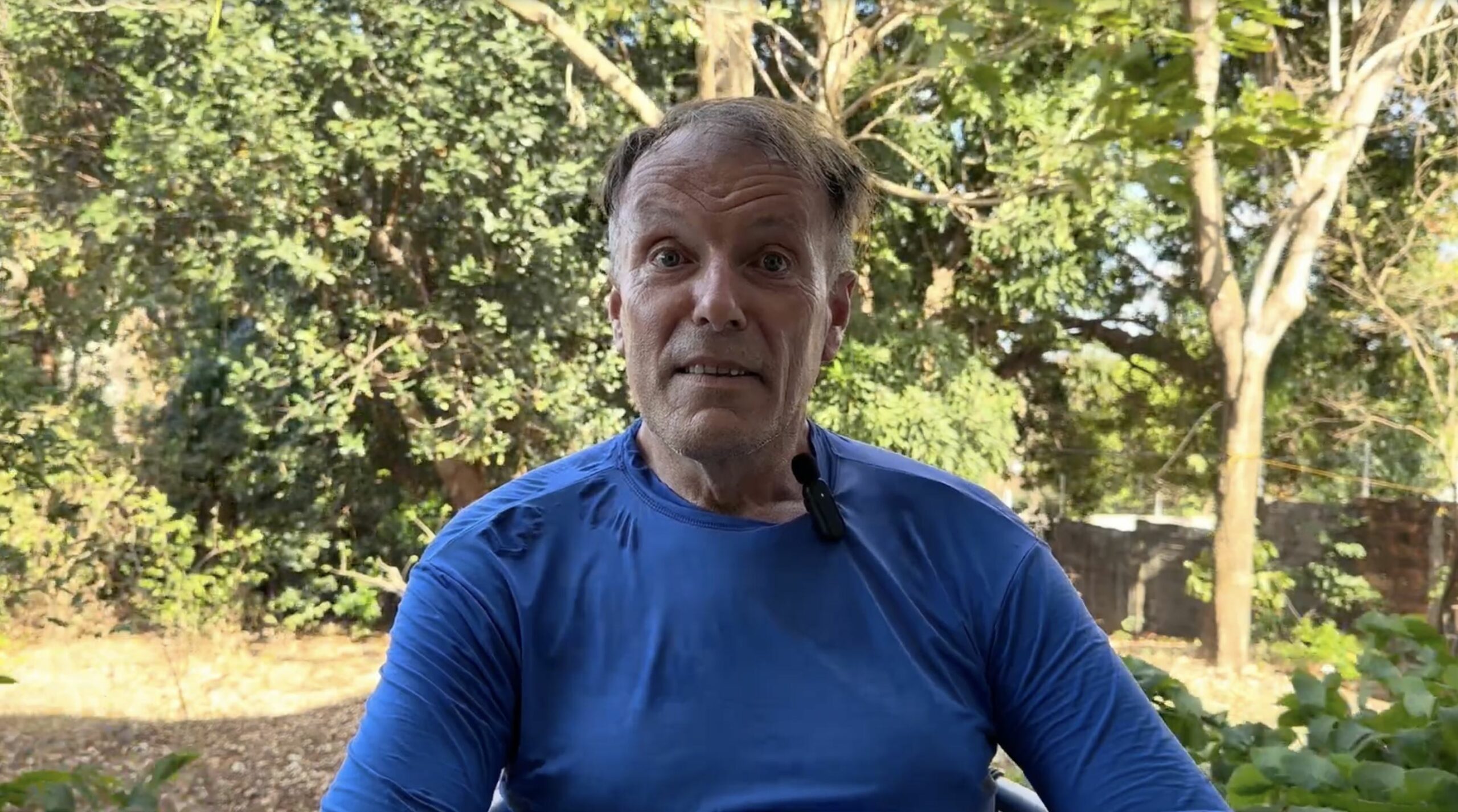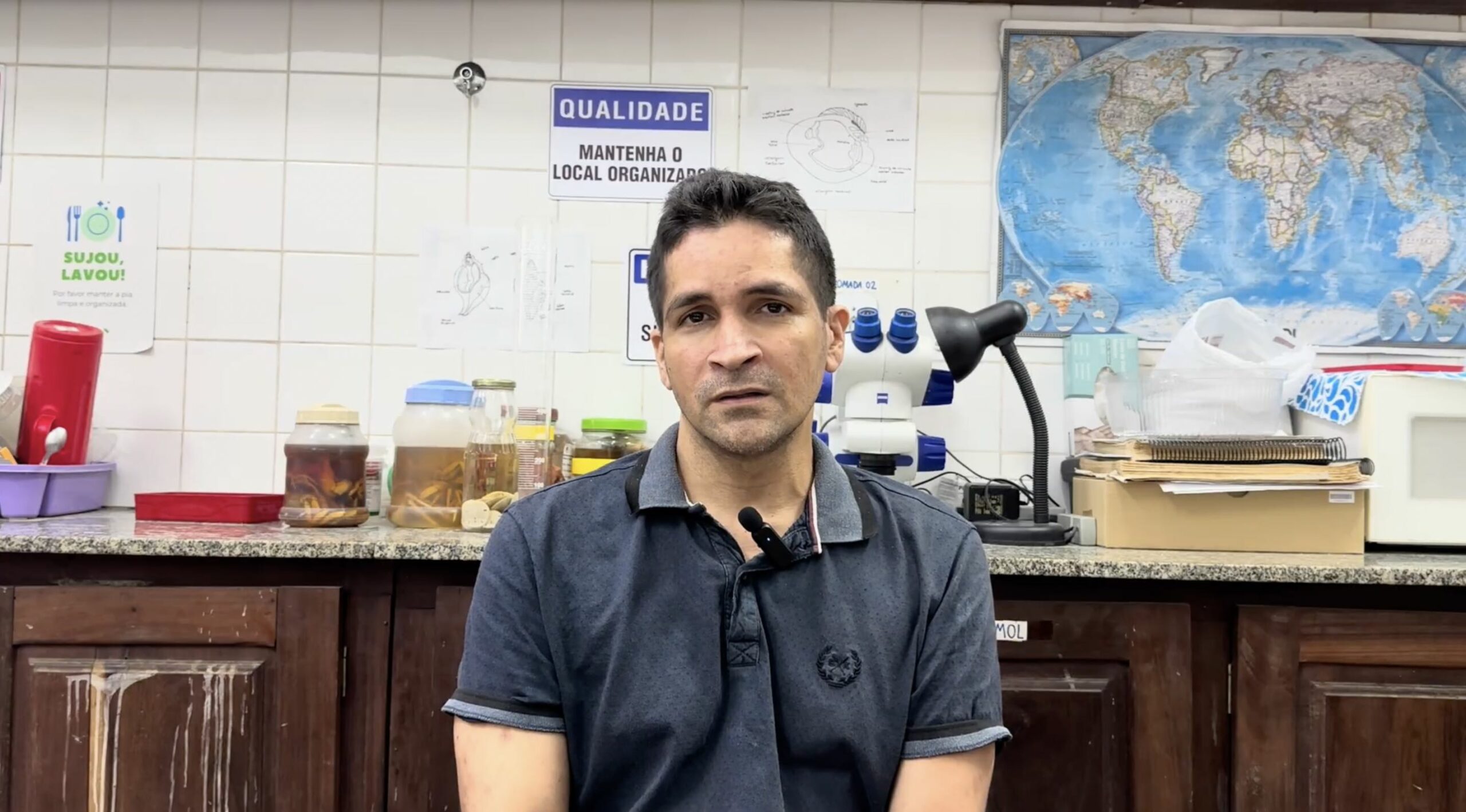
As part of our project to collect artistic and personal accounts of the links between nature, memory and transmission, we met Thiago Fonseca, a visual artist and teacher who has been living in Maranhão for over a decade. Originally from Rio de Janeiro, his work is rooted in the popular cultures of urban peripheries, Afro-Amerindian traditions and the imagery of the encantaria, specific to the north-eastern territories of Brazil. Through a multifaceted body of work informed by archives, ritual gestures and oral narratives, Thiago explores the powers of the invisible, the legacy of Black and Indigenous struggles, and the memory of the body.
An insular and initiatory journey
Thiago first presents himself as an islander. Born in Rio de Janeiro, he comes from Morro do Guarabu, on Governor’s Island.
Now based in São Luís, Thiago has lived for fourteen years in this state marked by a deep Afro-indigenous tradition. Trained in visual arts at the Federal Institute of Maranhão, he claims an artistic approach based on collective memory, popular practices, and attentive listening to invisible narratives.
The sensitive archives of popular culture
At the crossroads of sculpture, painting and performance, Thiago’s work is multifaceted. His references are many: master embroiderers, the carnivals of Rio, the masked figures of Bumba-meu-boi, the voices of the careteiros, but also his own reading and research. ‘My references come from these experiences, but also from archives, research, and various interests in painting, sculpture, and popular activities, such as those of master careteiros and other artisans and embroiderers.’
Encantaria: a living memory of the territories
At the heart of his work is the notion of encantaria, or enchantment, which is essential in the Afro-Amerindian cosmologies of northern Brazil. It refers to a parallel reality, animated by spirits, ancestors and natural forces, often embodied by hybrid or invisible figures.
Thiago explains:
‘For me, enchantment is fundamentally something we cannot explain. We experience it, we are part of it and we respect it because it is older than us.’
This relationship with the sacred is inseparable from the defence of territories. He points out that encantaria is particularly rooted in the Grão-Pará regions, which include Maranhão, Piauí and Pará. These territories have been marked by colonial history and violence against indigenous peoples and enslaved Africans. Enchantment is a form of resistance, transmission and memory.
Female and ancestral figures of water
Water, the sea and rivers are omnipresent in his work. He evokes mythical female figures such as Iara, Kazumba and Dona Maria do Rosário, a female entity who is very present in the terreiros and popular stories of Maranhão. ‘These are figures who are very close to me, who protect me, who speak to me and show me the way.’
Thiago insists on the need to preserve wetlands, springs and forests, but also the stories associated with them. Care for nature goes hand in hand with care for memory and spirituality. Through embroidery, painting and words, the aim is to ‘bring back what has been erased’, to restore visibility to marginalised or invisible lives.
An aesthetic of repair
His artistic practice is part of a desire to repair and recognise marginalised cultures. Far from museumifying popular culture, he advocates a living, embodied, relational approach.
‘What interests me is what we call “popular culture”. These are living people, with their own ways of walking, talking, embroidering, dancing and crying too.’
In a context of environmental threats and territorial violence, Thiago Fonseca defends an engaged, poetic and deeply political artistic practice in the service of memory, justice and shared life.
Testimonies from the same panel


